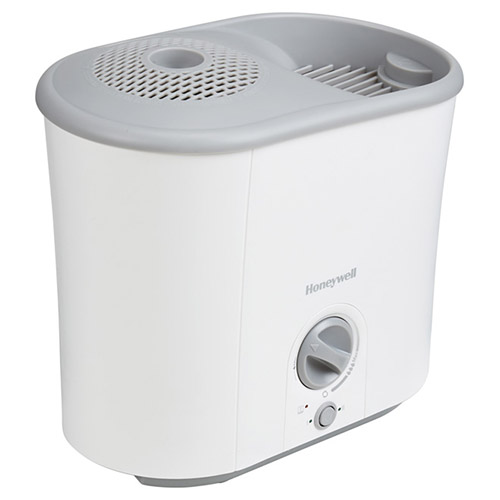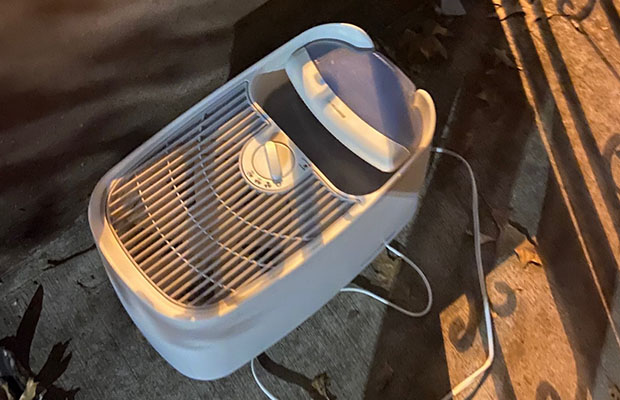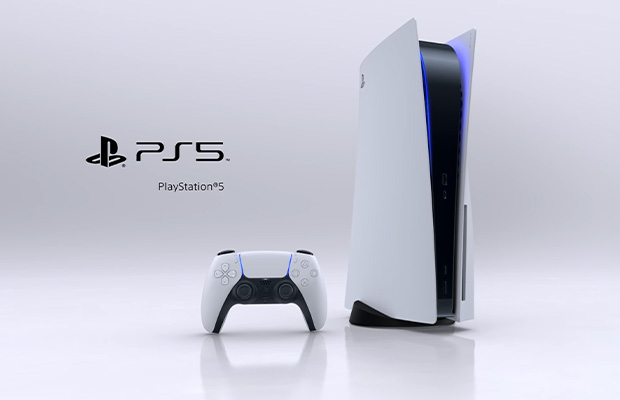People frequently ask, “How to clean Honeywell humidifier?” In this article, the detailed cleaning procedure that will assist you in cleaning your humidifier is explained.
The majority of Honeywell humidifier models are covered in this article’s safe and efficient method, which applies to a variety of Honeywell models.
Stop your Honeywell humidifier from being damaged by mineral backup and bacterial growth. Your humidifier can run steadily and effectively with some simple upkeep.
Here are a few pointers that will enable your portable humidifier to gradually release cozy and calming moisture into the vicinity.
Table of Contents
Why Is Honeywell Humidifier Cleaning Important?
Your health as well as the state of your home can be impacted by dry and humid air. Your nose and throat airways can become particularly irritated by dry air. In order to relieve many of the symptoms brought on by dry air, humidifiers are excellent at adding moisture back into the air. They can also aid in the alleviation of some flu and cold symptoms. Every day, empty the tank of your humidifier, dry it out, and then refill it with fresh water to prevent the growth of bacteria. How well your humidifier works will depend on how often you clean it. No one desires a filthy humidifier. To keep running smoothly, you must clean your humidifier. If you don’t clean your humidifier properly, bacteria will spread throughout your house. A surface on which bacteria or fungi may grow is created by the minerals that make up scale after they have detached from the water and settled on the surface. For those who have asthma, allergies, or other breathing problems, these air pollutants can be especially problematic.
How To Clean Honeywell Humidifier?
Rinse And Refill Daily
In many cases, a regular rinse and refill can greatly reduce the likelihood of mold growth and bacterial contamination. The following actions will stop the spread in its tracks. Simply rinse out the device and then fill it back up with fresh water on days when you use your humidifier. When you are filling the tank with fresh water, simply flip the humidifier filter (which is used in units that use a Honeywell Humidifier Filter) from top to bottom. It’s that simple.
Descale And Disinfect Weekly
Additionally, it’s advised that you once a week descale and clean your humidifier in your home or place of business. White vinegar and bleach solution can be used to accomplish this with ease. Simply turn off your Honeywell humidifier and unbolt the water tank. Please note that you should never use white vinegar or bleach when cleaning a Honeywell Humidifier Filter. If your unit uses a Honeywell Humidifier Filter, make sure to remove the filter and set it aside. After adding 2 cups through the water tank, you can start cleaning your humidifier with white vinegar. Excess mineral deposits will be eliminated by this process. Prior to emptying, give yourself a total of 15-20 minutes. Add half a tablespoon of bleach solution to the water tank of your travel humidifier to clean it. (If you use more than half a tablespoon, your humidifier could be harmed. In the tank, stir the solution. Once the humidifier’s water reservoir is full, the bleach will drain into it while simultaneously cleaning other parts of the humidifier.
NOTE: Never combine vinegar and bleach. Descaling and disinfecting must be carried out independently. Please refer to your user manual if you require any additional instructions. On their product page, the Honeywell Store lists online manuals for their humidifiers.
Replacement Humidifier Filters
This holds true for Honeywell humidifiers that have filters. 0-60 days remains the typical schedule for replacing a Honeywell Humidifier Filter Using hard, mineral-rich water in the humidifier has a variety of effects. The actual filter being stiff and rigid or encrusted with buildup are warning sign that it needs to be replaced. A bad odor is released by the filter. It’s time to buy a replacement filter if you notice the humidifier is producing less moisture.
NOTE: If you want to keep your home humidifier cleaner for longer, think about using Honeywell Protec Humidifier Cleaning Balls. Protec Cleaning Balls continuously clean and guard against mold and bacteria. Slime buildup in the water and on humidifier surfaces is another issue that Protec Cleaning Cartridges help with. You won’t need to clean your humidifier as frequently if you use the Protec Cleaning Ball. But you still need to clean your humidifier frequently.
Seasonal Shut-down And Start-up
It is suggested that you descale and disinfect your humidifier one last time before storing it for the season. To maximize the effectiveness of your humidifier, follow the steps once more when you’re ready to use it.
The quality of the air around you can be greatly enhanced by using your Honeywell Humidifier wisely. A wide range of portable humidifiers that provide soothing comfort is available from The Honeywell Store. Online shoppers can also purchase Honeywell humidifier filters.

How To Remove Scale For Honeywell Humidifiers?
Here are my detailed instructions for cleaning the scale in your Honeywell humidifier so it can operate at its peak efficiency and not endanger you and your loved ones. This guide can be applied to pretty much any portable Honeywell humidifier.
Cleaning Materials Needed
- 2 cups of vinegar
- 1 gallon of water
- A soft cloth
- Cotton Swab
Scale Removal Instructions
1. Remove the humidifier from the outlet and turn the power off.
2. In order to completely empty it of water, you must remove the humidifier’s water tank from the base.
3. To the water tank, add 2 cups of undiluted distilled white vinegar. Put the tank cap back on and stir the vinegar solution in the tank. You should now add 2 cups of pure white vinegar to the tank and set it on the base. Remove the water cap once more and stir the vinegar in the tank. Likewise, replace the humidifier’s tank with it so that vinegar can be used to remove minerals from the nebulizer. (The nebulizer is the small nozzle or device that produces a fine spray of water.) Additionally, this procedure will remove the scale from the water tank’s bottom.
4. Soak for 15 to 25 minutes.
5. Pour out the vinegar and minerals after the solution has had a chance to soak. Once the scale has been loosened by the vinegar, you should use a soft cloth to wipe down the inside of the tank, the float, and the nebulizer.
6. You should take a moment to thoroughly rinse the humidifier’s water tank until the vinegar- or bleach-acid odor is completely gone before using it again.
Steps To Disinfect Honeywell Humidifiers
#1. In the previous section’s scale removal instructions, follow Steps 1-3.
2. Pour 1.9L of water and a fraction of a teaspoon of bleach into the water tank.
3. Tank cap should be replaced after stirring the solution. Placing the tank on the base will cause the bleach solution to drain into the water reservoir, where it will sanitize the reservoir and other parts as they soak. (To finish the disinfecting process, follow steps 5-7 in the scale removal instructions in the previous section.)
Use only half a teaspoon, please. of bleach per 1/2 gallon of water may result in damage to your humidifier. You should also avoid combining vinegar and bleach solutions. Disinfecting and removing the scale must be done separately.
How Frequently Should I Clean Honeywell Humidifier?
Some people might think that since a humidifier only uses water, there is no need to clean it. They are mistaken because if you don’t clean your humidifier, mineral buildup (also known as scale) will remain inside.
It is well known that microbial growth and subsequent health issues can result from humidifiers that are dirty. For a humidifier to work properly, it needs to be cleaned frequently. If your humidifier has a five-gallon or less capacity, you should clean it every day and sanitize it once a week. A minimum of once every two weeks should be spent cleaning and sanitizing a humidifier with a five-gallon or greater capacity.
To get rid of mineral buildup, clean your humidifier with undiluted white vinegar. After that, you can clean your humidifier with a solution made from 1 teaspoon of bleach and 1 gallon of water. Before storing your humidifier at the end of the season, descale it. Never keep used filters or other uncleaned accessories in a humidifier.
Final Thoughts
When it comes to health problems and restoring moisture to the air, humidifiers can be a big help. It can be very harmful to you and your family, and it will perform significantly worse if you don’t clean your humidifier properly once a week or twice a month. Because it could lead to serious health issues, you don’t want bacteria to grow in your humidifier.



MOST COMMENTED
How to
How to Clean Homedics Humidifier: Detailed Guide
How to
Are Humidifiers Good for Pneumonia? Complete Guide
How to
Can You Put Drano in a Dishwasher? (Facts & Safe Alternative)
How to
How to Turn Subtitles on Or Off on Peacock TV: 2023 Guide
How to
How to Get Rid of Hollow Arrow on iPhone? 2 Simple Ways
How to
How to Mirror iPhone to TV Without WiFi: Complete Guide
Computers, Tablets & Printers
The 5 Best Printers for Cricut in 2022